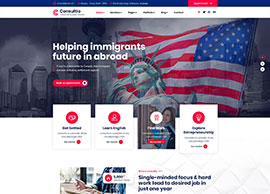The best way to get postal discounts is to automate your mailings and apply barcodes. The question is does it make sense to do this on your own or by using a third party presort service. We are not going to discuss the technical details behind bar-codes, but the business reasons of where and when it makes sense. I have the authority to write this article because I am the self-proclaimed “King of Barcoding”. I am responsible for over 5,000 companies barcoding their mailing during my 20 years in this industry. I managed major accounts in Boston, grew the only national presort service offering to over 4,000 customers and was in charge of sales for all barcoding equipment for the largest provider. With this title comes responsibility. That is to teach you how to save the most money with the simplest processes that can be set up for your business.
Barcoding your Mailings in Your Office:
First off we need some basic housekeeping. Here are the minimum requirements to barcode your mailings on your own:
- Pieces – At least 500 pieces for First-Class Mail® or 200 pieces for Standard Mail®.
- Software – Need software that meets all USPS certifications.
- Permits – Need to have at least one permit from the USPS
- Preparation – All mailings must have barcodes on each piece, be sorted, placed in trays with tags and reports need to be brought with the mail to the USPS for processing (or submitted electronically).
Here is a link to the USPS Quick Service Guides which is an easy way to get the requirements for your mailings. http://pe.usps.com/text/qsg300/q000.htm
Barcoding Advantages
- It saves you postage! This is the main reason most companies barcode their mailings. (See the chart above) As the pieces get larger, the savings can increase dramatically. Many customers doing mailings without any discounts will also try to apply for Standard Mail® rates. Standard Mail® is designed for newsletter or a solicitation where every piece is the same and the customer can live with a slightly slower delivery. Things like invoices, statements and checks have to go First-Class Mail® because every piece is slightly different or has personal information.
- Cleaner Addresses: In order to qualify for discounts, your mail list must be compared to the national address list held by the USPS. Every barcode software provider will be able to comply with these rules with CASS and DPV certifications. All this means is that inside the software they have every deliverable address and can check that yours matches this master list. Common mistakes are fixed automatically and exception lists are produced. Updates are typically provided every 1-3 months to make sure the addresses are up to date.
- Keep track of customer moves: The USPS requires that you comply with one of several move update requirements. Most of the vendors can link in with the national change of address database and give you the changes real time. This is really helpful for companies to eliminate “Undeliverable as Addressed” mail. Think about the college Alumni department. How many times have you told your school your new address so they could solicit you for donations?
- Faster Delivery: Barcoded mail travels faster than mail without a barcode. This is because when you submit your mailing to the USPS it is set up to skip steps. It is in a tray with the correct forms telling the USPS what is being mailed and where it needs to go. Also, since the USPS sprays a barcode on every piece, you bypass this step as well.
Cons to Barcoding
- Software Costs: Software typically starts at about $1,000 per year and can grow based on features and options.
- There are many steps to barcoding: If mailings are only done sporadically, it becomes difficult to remember all of the steps. As a rule of thumb, make sure that you are doing mailings at least once per month or have staff with experience.
- Who will do it: Barcoding software is typically loaded onto one PC. Most companies have many departments or people doing mailings. I have seen many barcoding projects fail because the company thought they would train large groups of people to use the software and share the tool. This never works because of the complexity mentioned above. To barcode mail in house requires one or a few dedicated operators.
- Taking to the USPS: In order to get automation discounts, mail needs to be submitted to postal centers that accept discounted mailings. Not all do and with the USPS’s budged cuts, this list is getting smaller and smaller. In some cities there are courier services that can be contracted to help with this.
- Keeping Software up to Date: In order to qualify for discounts, the software needs to be updated at least quarterly. Again this is a reason why it is better to have dedicated operators who can manage this process.
- Requires Programming for Window Envelopes: If you want to barcode things like invoices, statements and checks, you will need to have custom programing that can put the barcode directly onto your document.
- Day to Day Mail that does not meet volume thresholds or processes: Every company will have some mail that cannot be barcoded because it comes down from different departments or groups that cannot follow the process above or the quantities are too low.
- Meeting new USPS Requirements – There is a move to have new IMB barcodes and submission methods that may create difficulties for mailers or require some process changes.
Using a Presort Service
Many companies want the benefits of automation and barcodes but cannot cost effectively manage it inside their operation.
Presort Services – These providers have one or several sorters that are similar to what the USPS uses in their facilities. These sorters read the address on the mail piece and spray the barcode on the bottom right. They can then sort the mail into bins to where it is going throughout the country. Presort providers work on a revenue split arrangement with the customer and the USPS. Here is the most common:
First Class Single Piece Postage Rate – $.48
Rate the customer meters the mail – $.46 ($.02 savings) (Lower rates for higher volumes)
The presort service commingles your mail with other mailers to be able to achieve the highest sortation levels. Hopefully most will be to the deepest sort levels the USPS offers of $.381-.435 and the USPS pays them the difference. This payment by the USPS covers their transportation and operations cost as well as their profit margins.
This has been an increasingly popular way to barcode mailings and there are over 100 Presort Service providers in the US.
Pros:
- They do all of the work! They pick up the mail at your office, run it through their sorters and take it to the USPS.
- They can manage the move update and IMB requirements
- The more you mail, the higher the discount you can typically negotiate.
Cons:
- The savings are not as great as doing it yourself.
- These services are most common for First Class® mailings. Some presort services do Standard Mail® as well but many require the customer to have the mail barcoded up front and they will only move it deeper into the postal system.
- Many arrangements require you to date the mail for the next day. This can delay local mail. Also, many providers are bringing mail to a center that is out of your postal area. This can cause further delays in local mail delivery.
- Lastly, many presort services will tack on extra fees for services so you have to look at your bills carefully. Know what you are paying for prior to signing their contract.
Conclusion
As you can see there are a lot of options you can consider. You need to look at the quantity and frequency of mailings to see what works best for your organization. With the USPS deficit increasing by the minute it is inevitable that rates will increase and barcoding can be the best way to save money.













































